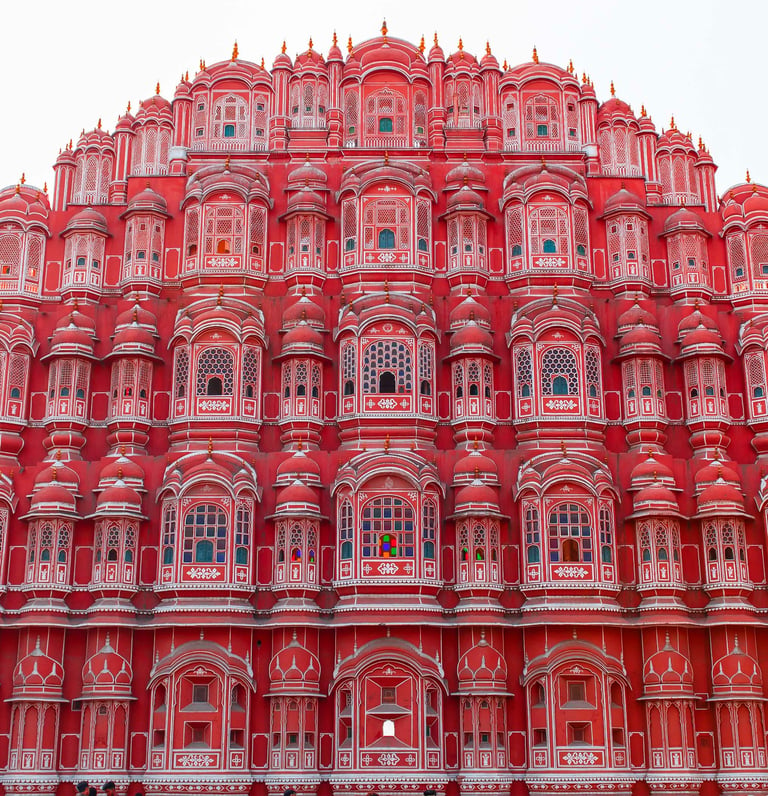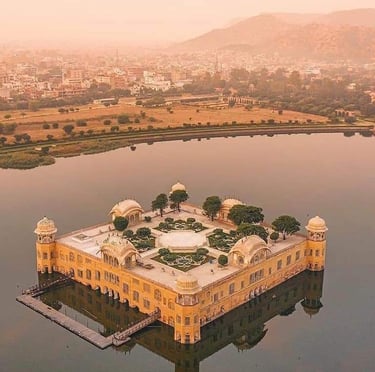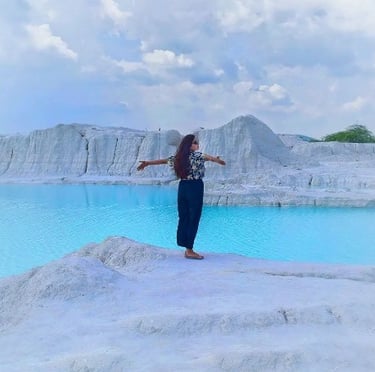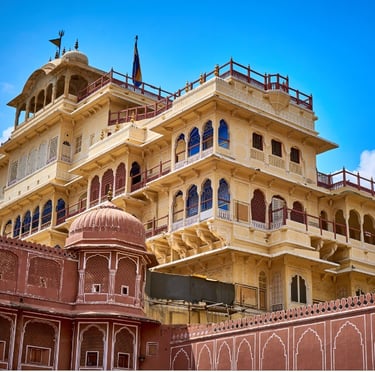Jaipur City Tour


Jaipur, the vibrant capital of Rajasthan, boasts a rich and meticulously planned history that sets it apart from many other cities in India. Its story is one of visionary leadership, architectural genius, and a legacy of royal grandeur that continues to captivate visitors to this day.
The foundation of Jaipur was laid on November 18, 1727, by Maharaja Sawai Jai Singh II, the Kachwaha Rajput ruler of Amer. By the early 18th century, the growing population and increasing scarcity of water made the erstwhile capital of Amer, a fortified town nestled in the Aravalli hills, feel constrained. A keen astronomer, mathematician, and a man of great vision, Jai Singh II sought to build a new, modern capital that would be a center for trade, commerce, and knowledge.
Jaipur City Built on Science and Stars
Unlike the organic, often chaotic, growth of other medieval cities, Jaipur was one of India's first planned cities. The Maharaja, a great patron of the sciences, entrusted the architectural design to a talented Bengali Brahmin scholar named Vidyadhar Bhattacharya. The city's layout was conceived on a grid plan, following the principles of ancient Hindu architectural treatises, the Vastu Shastra and the Shilpa Shastra. The design incorporated a series of nine rectangular sectors, or chokris, symbolizing the nine divisions of the universe. This meticulous planning resulted in wide, straight avenues intersecting at right angles, creating a sense of order and openness that was revolutionary for its time. The main boulevards were designed to be 111 feet wide, a testament to the foresight of its founder.
The "Pink City": A Royal Welcome
The city's famous epithet, the "Pink City," was acquired in 1876. To extend a grand welcome to H.R.H. Albert Edward, the Prince of Wales (who would later become King Edward VII), the reigning ruler, Maharaja Sawai Ram Singh II, ordered the entire city to be painted in a terracotta pink color. This hue was traditionally associated with hospitality. The color became an integral part of Jaipur's identity, and a law passed in 1877 made it illegal for buildings in the old city to be painted any other color, a tradition that is largely maintained to this day.
A Hub of Culture and Commerce
Enclosed by fortified walls and pierced by seven imposing gates, Jaipur quickly flourished. Its strategic location on key trade routes helped it become a thriving hub for merchants, artists, and craftsmen. The Maharaja invited artisans from across the country to settle in his new capital, leading to the city becoming a renowned center for gemstone cutting, jewelry making, block printing, and other fine arts that are famous even today.
Jaipur through the Ages
Jaipur maintained a politically significant role through the decline of the Mughal Empire and the rise of British influence in India. The rulers of Jaipur were astute diplomats, forging strategic alliances that allowed the state to retain a significant degree of autonomy throughout the British Raj. After India gained independence in 1947, Jaipur was merged with the other princely states of the region to form the state of Rajasthan, and in 1949, it was declared the state's capital.
Today, Jaipur is a bustling metropolis that beautifully marries its historical legacy with the demands of a modern urban center. Its majestic forts, opulent palaces, meticulously planned streets, and vibrant bazaars stand as a living testament to the vision of its founder, Maharaja Sawai Jai Singh II, earning it the distinction of being a UNESCO World Heritage City.
Om Tour Travel
Best Car Rental Service in Jaipur
Contact us
omveerchoudhary471@gmail.com
info@omtourtravels.com
+91-830252009
+91-9887621556
© 2025. All rights reserved.






